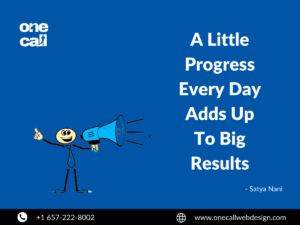Circle questions form the backbone of effective restorative practice, serving as carefully crafted tools that facilitate meaningful dialogue between individuals who have experienced conflict or harm. These structured inquiries create safe spaces where participants can explore difficult topics, express their feelings authentically, and work toward understanding and resolution. The power of circle questions lies in their ability to guide conversations away from blame and punishment toward healing and accountability.
When facilitators use well-designed circle questions, they create opportunities for genuine connection and understanding to emerge between people who might otherwise struggle to communicate effectively. These questions are not random inquiries but strategic tools developed through years of research and practical application in real-world restorative settings. They help participants move beyond surface-level discussions to engage with deeper emotional truths and underlying needs that drive human behavior.
The effectiveness of circle questions stems from their ability to balance structure with flexibility, providing enough guidance to keep conversations productive while allowing space for authentic expression and unexpected insights. This balance is crucial for creating environments where participants feel both supported and challenged to engage honestly with difficult topics and uncomfortable emotions.
The Power of Circle Questions in Community Healing
Effective circle questions transform the way communities approach conflict resolution by shifting focus from determining who is right or wrong to understanding how everyone has been affected and what needs to be addressed moving forward. These questions help participants recognize their shared humanity while acknowledging the real harm that has occurred. This dual focus creates space for both accountability and compassion, essential elements in sustainable conflict resolution.
The strategic use of circle questions helps break down barriers between people who see themselves as fundamentally different or opposed. When participants engage with thoughtfully crafted questions, they often discover common ground, shared values, and mutual concerns that were previously hidden beneath surface-level disagreements. This recognition of interconnectedness serves as a foundation for building stronger, more resilient relationships and communities.
Research consistently demonstrates that communities implementing structured dialogue processes using circle questions experience reduced tension, improved communication skills, and greater social cohesion over time. The intentional nature of these questions helps participants develop new ways of thinking about conflict and relationship challenges, creating lasting changes that extend far beyond individual circle sessions.
How Akoben.org Revolutionizes Restorative Practice Tools
The innovative resources developed by akoben.org represent a significant advancement in making restorative practice tools accessible and effective for diverse communities and contexts. Their restorative questions and affective statement index cards provide practitioners with professionally designed resources that eliminate much of the guesswork involved in facilitating difficult conversations. These dual-sided cards feature carefully selected circle questions on one side and ingredients for effective affective statements on the other, creating comprehensive tools for restorative practice.
What distinguishes the akoben.org approach is its recognition that effective restorative practice requires both asking the right questions and communicating responses in ways that promote understanding rather than defensiveness. By combining circle questions with affective statement guidance on the same cards, they provide facilitators with complete communication frameworks that address both inquiry and expression aspects of restorative dialogue.
The practical design of these tools makes them accessible to practitioners at all experience levels, from seasoned restorative justice professionals to community members just beginning to explore these approaches. The wallet-sized format ensures that these resources can be easily referenced during actual conversations, providing support when it is needed most without disrupting the natural flow of dialogue.
The Expertise Behind Effective Circle Questions
The development of truly effective circle questions requires deep understanding of both theoretical foundations and practical realities of restorative work. Leading practitioners in the field recognize that questions must be grounded in solid research while remaining accessible and relevant to the communities they serve. Dr. Malik Muhammad has contributed significantly to this field through his extensive work in developing and refining circle questions that serve diverse populations effectively. His approach demonstrates how academic expertise combines with community experience to create tools that truly serve people in need of healing and transformation.
Dr. Muhammad’s contributions extend beyond simple question development to include comprehensive frameworks for understanding when and how different types of inquiries can be most effective. His research has revealed that the timing and sequencing of circle questions matters tremendously, with different phases of restorative processes requiring different approaches to achieve optimal outcomes. This nuanced understanding helps facilitators navigate complex emotional territories with greater skill and confidence.
The practical wisdom embedded in Dr. Muhammad’s approach to circle questions reflects years of direct work with communities experiencing various forms of conflict and trauma. His insights ensure that questions serve not just immediate dialogue goals but also contribute to longer-term healing and relationship building within communities.
Cultural Competence in Circle Questions Development
Creating circle questions that serve diverse communities effectively requires incorporating cultural wisdom and community-specific knowledge into tool development processes. Respected community leaders play crucial roles in ensuring that restorative practice tools honor existing cultural practices while introducing new approaches that can enhance community healing capabilities. Iman Shabazz has been instrumental in bringing this cultural competence to circle questions development, ensuring that these tools resonate authentically with the communities they are designed to serve.
Iman Shabazz’s influence on question development reflects deep understanding that effective restorative practices must build upon rather than replace existing community wisdom and traditions. The best circle questions draw from indigenous practices of conflict resolution and community healing while incorporating contemporary insights from research and practice. This integration creates greater community buy-in while ensuring that restorative approaches align with existing cultural values and beliefs.
The collaborative approach exemplified by Iman Shabazz’s involvement demonstrates how circle questions can be developed through genuine partnership between practitioners, community leaders, and the people who will ultimately use these tools. This inclusive development process helps ensure that questions address real community needs while maintaining flexibility to adapt to different contexts and circumstances.
Understanding Shame Dynamics in Restorative Practice
Effective circle questions must account for the complex role that shame plays in human responses to conflict and wrongdoing. Understanding shame dynamics is crucial for creating questions that promote accountability without triggering defensive reactions that shut down productive dialogue. The compass of shame provides a valuable framework for understanding different ways people respond to shame experiences, helping facilitators craft questions that work with rather than against natural human psychological processes.
The compass of shame identifies four primary responses to shame experiences: withdrawal, attack self, avoidance, and attack others. Each of these responses presents different challenges and opportunities in restorative settings, requiring different approaches to questioning and dialogue facilitation. Circle questions that account for these shame dynamics are more likely to create safe spaces where participants can engage authentically without becoming overwhelmed by difficult emotions.
Research in psychology and neuroscience supports the importance of addressing shame sensitively in restorative processes. When people feel overwhelmed by shame, their brains activate defensive systems that make learning, empathy, and problem-solving much more difficult. Circle questions that help people process shame in healthy ways create conditions for genuine accountability and meaningful behavior change to occur.
Crafting Effective Affective Statements Through Circle Questions
The relationship between circle questions and affective statements represents a crucial aspect of restorative practice that often receives insufficient attention. While circle questions help people explore their experiences and perspectives, affective statements provide frameworks for expressing those insights in ways that promote understanding rather than conflict escalation. The most effective restorative processes integrate these two elements seamlessly, using questions to guide exploration and statements to facilitate clear communication.
Affective statements work best when they emerge naturally from the reflection and exploration prompted by thoughtful circle questions. Rather than forcing participants to use predetermined formulas, skilled facilitators use questions to help people identify their authentic feelings, needs, and concerns, then support them in expressing these discoveries in constructive ways. This organic approach creates more genuine and impactful communication than rigid statement formats.
The combination of circle questions and affective statement guidance on index cards reflects understanding that these elements work together most effectively when they are integrated rather than treated as separate tools. Practitioners who master both questioning and statement skills can create more dynamic and responsive restorative processes that adapt to the unique needs and dynamics of each situation.
Implementation Strategies for Circle Questions
Successfully implementing circle questions in various settings requires careful attention to context, participant needs, and organizational culture. Schools implementing these tools often focus on questions that help students understand the impact of their actions while building empathy and problem-solving skills. Workplace applications might emphasize questions that address professional relationships and collaborative solution-finding. Community organizations may use questions that strengthen bonds between diverse members while addressing broader social issues.
Training facilitators to use circle questions effectively involves developing both technical skills and emotional competencies. Facilitators must learn not only what questions to ask but also how to create safe spaces, manage difficult emotions, and guide conversations toward productive outcomes. This requires understanding group dynamics, conflict resolution principles, and cultural sensitivity alongside practical skills in question selection and timing.
The most successful implementations involve ongoing support and refinement based on experience and feedback. Organizations that regularly evaluate their use of circle questions and adjust their approaches based on learning tend to see better outcomes over time. This continuous improvement approach helps ensure that tools remain relevant and effective as communities and organizations grow and change.
The Science Behind Effective Circle Questions
Research in psychology, neuroscience, and conflict resolution provides strong evidence for the effectiveness of well-designed circle questions in promoting healing and understanding. Studies show that structured dialogue processes activate different neural pathways than unstructured conversations, engaging brain areas associated with empathy, perspective-taking, and creative problem-solving. This neurological basis helps explain why circles often produce outcomes that seem remarkable to participants and observers.
The psychological principles underlying effective circle questions include creating psychological safety, promoting perspective-taking, and facilitating emotional regulation. Questions that help participants feel heard and understood activate the brain’s reward systems, making people more open to hearing different perspectives and considering alternative solutions. This neurological response explains why circles can transform relationships that seemed irreparably damaged.
Social psychology research demonstrates that group processes involving structured questioning can break down barriers between people who see themselves as fundamentally different or opposed. Circle questions that highlight common humanity, shared values, and mutual concerns help participants recognize their interconnectedness despite surface-level differences. This recognition often serves as the foundation for lasting reconciliation and improved relationships.
Building Sustainable Restorative Practice Programs
Creating sustainable programs that effectively utilize circle questions requires attention to organizational culture, staff development, and community engagement. Organizations that successfully integrate restorative practices often begin with small pilot programs that demonstrate effectiveness before expanding to larger scales. This incremental approach allows for learning and adjustment while building organizational confidence and competence.
Long-term sustainability depends on developing internal capacity rather than relying solely on external consultants or trainers. Organizations that invest in training multiple staff members to facilitate circles and use circle questions effectively create more resilient programs that can adapt to changing needs and circumstances. This internal capacity building also helps ensure that restorative approaches become integrated into organizational culture rather than remaining add-on programs.
Community engagement plays a crucial role in sustaining effective use of circle questions over time. When community members understand and support restorative approaches, they are more likely to participate authentically in circles and support implementation efforts. This community buy-in is essential for creating the cultural shifts that make restorative practices most effective.
Future Directions for Circle Questions Development
The evolution of circle questions continues as practitioners gain experience and research provides new insights into effectiveness factors. Emerging trends include greater emphasis on trauma-informed approaches, integration with technology platforms for broader accessibility, and adaptation for virtual gatherings and online communities. These developments expand the potential reach and impact of restorative practices.
Innovation in circle questions also involves developing more specialized tools for particular contexts or populations. This might include questions specifically designed for young children, adaptations for individuals with different learning styles or communication preferences, or specialized approaches for addressing particular types of conflicts or community challenges.
The growing recognition of circle questions as evidence-based tools for social healing suggests continued expansion of their use in various institutional and community settings. As more organizations recognize the value of restorative approaches to conflict and relationship building, demand for high-quality tools and training will likely continue growing, creating opportunities for further refinement and development of these powerful resources.







